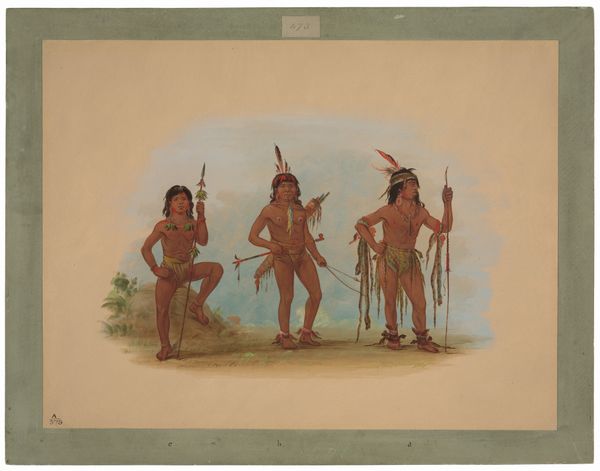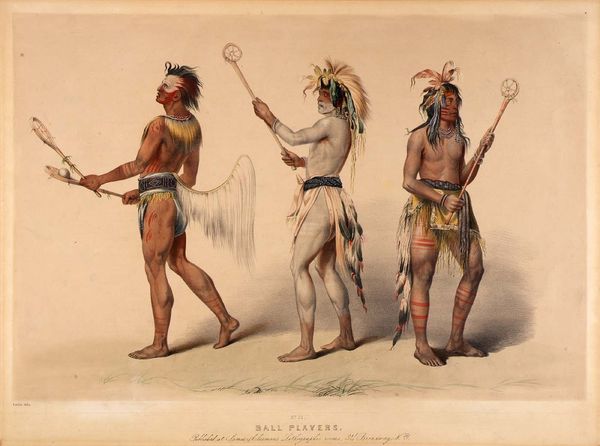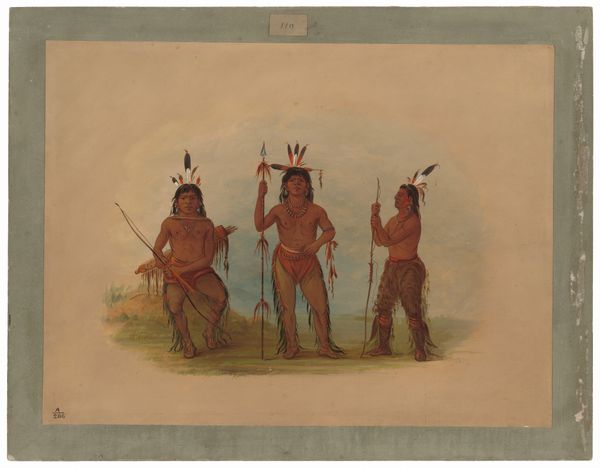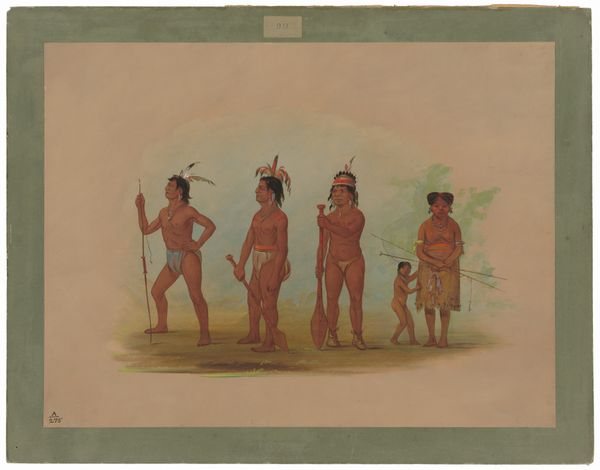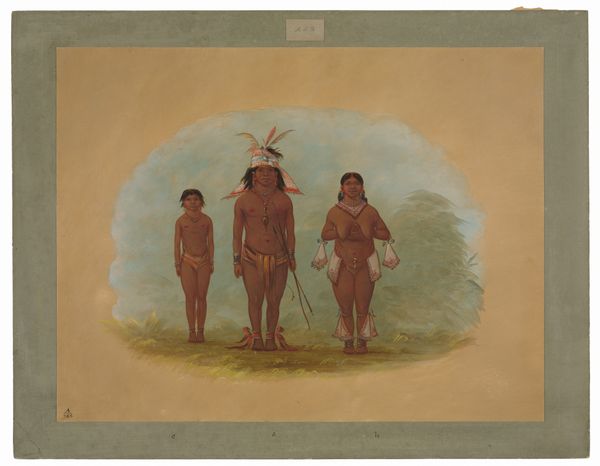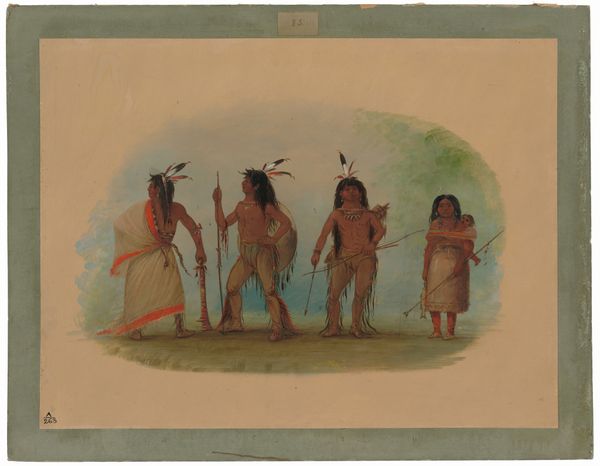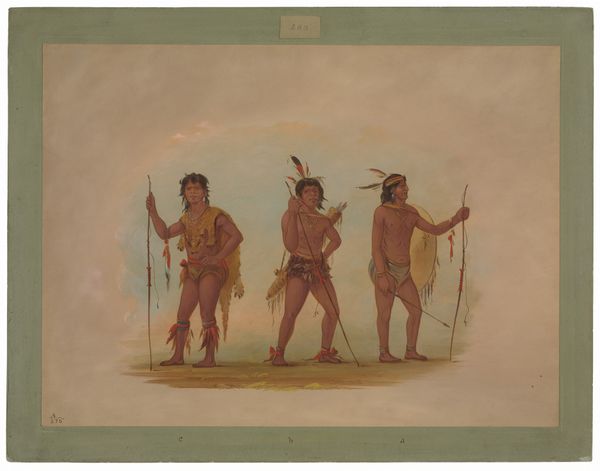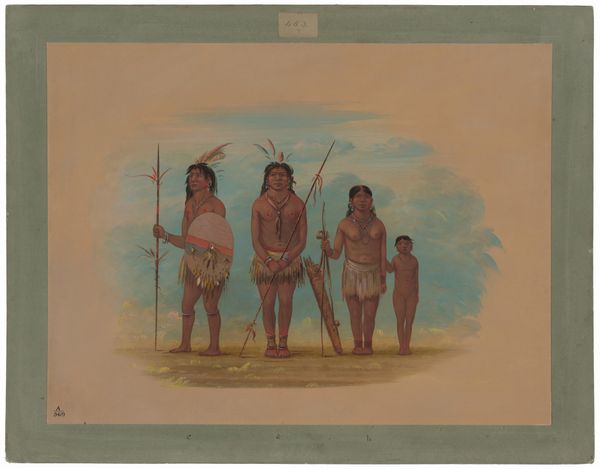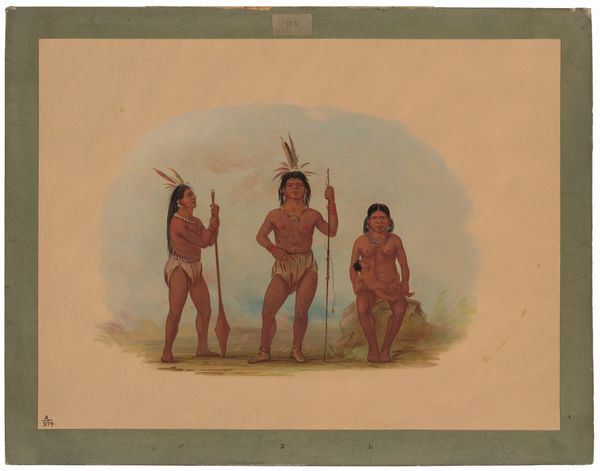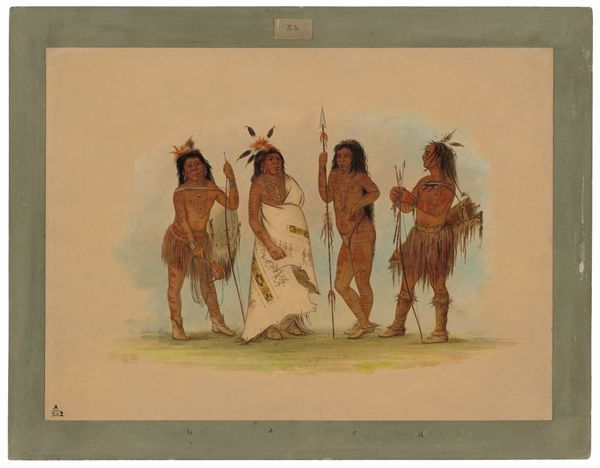
#
portrait
#
water colours
#
narrative-art
#
watercolor
Dimensions: Board:609 x 457mm Image:431 x 305mm
Copyright: National Gallery of Art: CC0 1.0
Curator: Alright, next up is George Catlin's "Ball Players" from 1844, rendered in watercolor. Quite striking, isn’t it? Editor: My immediate impression is one of controlled energy. The players are posed, almost as if staged, yet their vibrant costumes and the equipment hint at imminent action. There’s a tension between stillness and motion. Curator: It's fascinating how Catlin positions himself as a chronicler of Native American life, during a period of immense cultural disruption. We should acknowledge his role in portraying and sometimes exoticizing these cultures for a predominantly white audience. He really shaped perceptions in his era. Editor: Absolutely. Formally, the composition is very balanced. The verticality of the figures contrasts subtly with the wide emptiness of the backdrop and is visually grounding. I'm intrigued by how Catlin uses light to sculpt the figures, giving them a remarkable sculptural presence within a relatively flat medium. Curator: Indeed. Catlin sought to document the manners, customs, and appearance of various tribes during a period when westward expansion threatened their existence. The act of representation in itself carries enormous weight. Who gets to control the narrative and what aspects of culture are preserved is what interest me most. Editor: Looking at their attire and tools—the meticulously rendered headdresses, the unique patterns—I’m struck by their individuality. They’re not just types but seem carefully observed, suggesting a keen awareness of their personal identity within a larger tribal context. The detail in the ornamental design contrasts sharply with the negative space and it highlights their unique regalia. Curator: That balance is key to how Catlin framed his experiences. He clearly hoped to shape national policy towards Native Americans and often used these images to accompany his lectures. This artwork served to justify claims that they were a dignified people being tragically displaced. Editor: Well, in any event, considering how Catlin handled form, one can really understand how he sought to achieve his representational goal. He uses vividness and precision together to produce clarity and definition for the eye. Curator: In many ways the painting is indicative of the fraught relationship between colonizers and indigenous people. I wonder what the legacy of pieces like this will be? Editor: Indeed. Thinking about that use of form helps consider the complex place that "Ball Players" occupies in the cultural history of art.
Comments
No comments
Be the first to comment and join the conversation on the ultimate creative platform.
